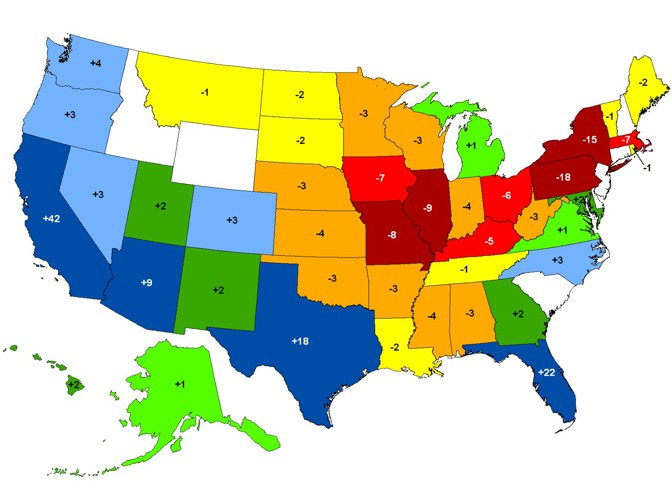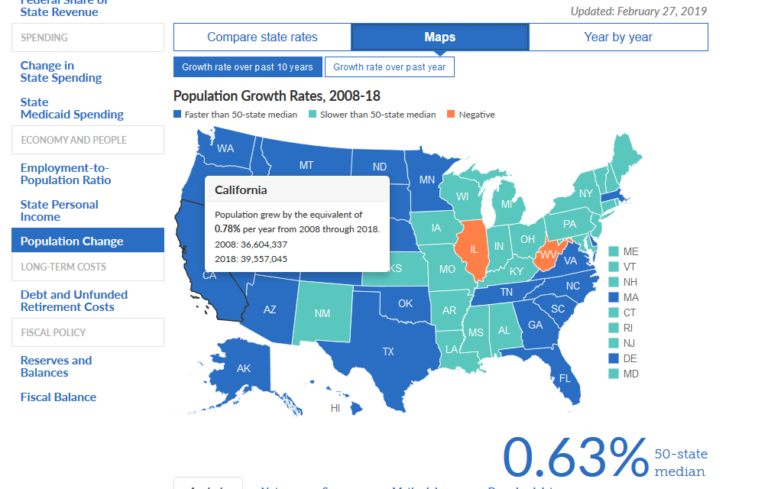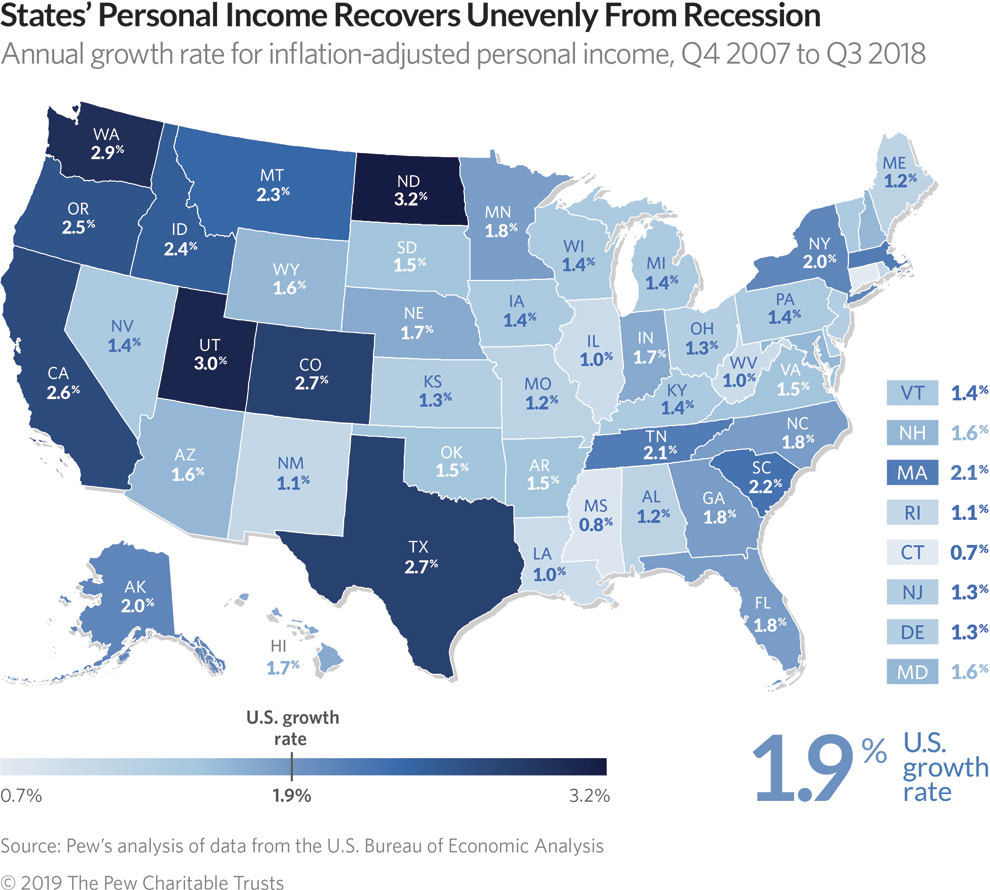
by Alex Gonzalez
I was a teenager in California in the 1990s when Americans first saw the significant growth of the Hispanic population, especially Mexican-Americans, in the Southwest. During this time, conservatives from publications like the National Review and think tanks like the Hoover Institution began coining terms meant to demonize Mexicans and Mexican-Americans. They warned the nation of a looming cultural decline caused by this wave of Latino immigrants.
In California, Conservatives and Republicans introduced alarmist labels like “MEXIFORNIA,” suggesting that states like California would turn into a third-world country like Mexico. In response, they argued that the state needed to act, leading to the creation of punitive laws like Prop 187. This legislation aimed to cut off access to government services for children, even though education is constitutionally protected. Over the past twenty years, many so-called “limited government conservatives” have used similar dishonest arguments to justify laws at both the federal and state levels, under the guise of “rule of law” or to prevent “American social decline,” all while targeting Mexicans and Mexican-Americans.
These critics blamed Mexican-Americans and Latinos for everything from job losses and increased crime to the erosion of a “white identity.” For them, the growth of the Mexican-American community symbolized America’s racial and cultural decline and the perceived loss of “white” power. Opportunistic Republicans within conservative circles frequently used this rhetoric to predict the economic downfall of the Southwest, particularly in states where Latinos, predominantly Mexican-Americans, were on the verge of becoming the majority.
Twenty-five years later, the Southwest has become the economic engine of America, with Mexican-Americans and Latinos now comprising almost half of the region’s population.
Over the last twenty years, the continued growth of the Southwest, driven primarily by the Latino population, stands out as the most significant takeaway from the new population estimates released by the Census Bureau in late December. These estimates, the last before the 2020 decennial census, will be crucial for reapportioning both congressional seats and Electoral College votes among the states.
According to U.S. Census estimates, population projections indicate a shift of ten congressional seats across 17 states by 2020. States expected to gain a seat include Arizona (1), Colorado (1), and Texas (3). While California may lose one seat, the state has maintained a stable population of around 39-40 million since 2014.

The reapportionments after both the 2000 and 2010 censuses produced comparable shifts in representation from the Northeast and Midwest to the Sun Belt. If the projections for 2020 prove accurate, it will mean that since the start of this century, more than 30 seats and Electoral College votes will have shifted from the Rust Belt to the Sun Belt, with no Rust Belt state gaining a seat at any point. A map from Election Data Services tracking the cumulative impact of reapportionment from 1910 through 2010 captures an even more dramatic shift of power and population to the Sun Belt states.
Politically speaking, these are House Congressional seats and Electoral College votes that will be taken from the Upper Midwest and the Rustbelt and reapportioned to the Southwest. The growth of the Mexican-American and Latino populations in the Southwest, particularly in California and Texas, is shifting political power by pulling congressional seats from the Rustbelt to the Southwest. These are the real, immediate redistricting changes that will occur in 2021, with the first election held in the Midterms of 2022, and subsequently in the Presidential race of 2024.
Moreover, both Texas and California are already “minority-majority” states, with Latinos making up more than 40% of the population. In Arizona and Nevada, “nonwhite people already constitute a majority of the population ages 18 to 64 in Texas and Nevada,” according to William Frey, a demographer at the Brookings Institution.
Population growth has also led to economic growth. California, a heavily urban majority-minority coastal state, is doing “awesome.” The state is in much sounder fiscal shape; while federal deficits are soaring, California has erased its red ink and even stashed $18 billion in a rainy day fund.
One of the most draconian predictions made by conservatives like Stephen Moore of the Heritage Foundation is that California has been losing population due to high taxes and too much immigration—particularly from Hispanics/Mexican-Americans—leading to an exodus of “whites” to other states like Arizona and Texas. However, new research from Stanford shows that those who leave are generally lower-income residents, while the state gains higher-income, educated residents. The study concludes that “both in absolute terms, and compared to sensible control groups, we find little migration response to changes in top tax rates.” Moreover, according to new population data by Pew Trust, California has a 0.15% better population increase at 0.78% than the national average at 0.63%. The population of California has grown to almost 40 million (39,557,000) from 36,600,000 in 2008 –– see population growth map below.

As 2020 begins, California’s economy is the strongest in the nation, with a gross domestic product (GDP) of nearly $3 trillion, making it the fifth largest economy in the world. The state also has an estimated $18 billion in a rainy day fund.
A common argument made by “conservative” pundits is that California’s high number of immigrants and high taxes would push out businesses, leading to economic decline. However, the state has continued to boom at higher rates than most red states, including those with lower taxes or no state taxes at all. The Brookings interactive geography of prosperity map shows that California has a stronger “Vitality Index” than any other state in the country.
Click on Vitality Index to see how your county & state stack up: https://brook.gs/2H7xYQf
From the Pacific to Gulf of Mexico
America’s second-largest state economy is Texas, producing nearly $1.8 trillion in economic output. Texas thrives not because it is a “red state,” but because Texas became a “heart of NAFTA.” Texas is the only state in the West with substantial economic growth since the start of the recession—see “Western States Lead the Pack in Key Economic Indicators” by Pew. Western states, including Texas, have recorded three times the rate of growth in total personal income compared to last-place Connecticut (see map below).

However, unlike other “red states,” what makes Texas so successful is its geographical location. The 1,250 miles of border with Mexico are filled with border communities that cross the border each day. An estimated 1 million people cross the border legally, and about $1.7 billion in trade crosses the U.S.-Mexico border every day. California, while having the largest economy in the nation, shares only 400 miles of border with Mexico.
Here are more facts about what makes Texas successful:
Texas is the most Mexican state in the Union:
- Mexico is Texas’ number importer; about 40% of Texas exports go to Mexico.
- 44% of all NAFTA trade come through Texas.
- Bilateral trade between Texas and Mexico is $187 Billion.
- Texas is regionally connected to the industrial heart of Mexico with highways linked to all NAFTA routes.
- Both California and Texas have similar demographic populations where 40% of the states’ populations are Hispanic; but unlike California where 80% of the “Hispanic/Latino” population is Mexican-American, in Texas 90% of all Hispanics are Mexican-American.
- Texas has more “sister cities” in Mexico than any other state.
Furthermore, the fact is that Texas has had a strong influx of Mexican immigrants who arrived in the U.S. during the ’80s, ’90s, and early 2000s. Their U.S.-born children are “playing a key role in keeping the population of Texas close to necessary levels of growth.”
In Texas, one in six residents is an immigrant, and a similar proportion is second generation—people born in the United States with an immigrant parent. Although the foreign-born population in Texas is more diverse than ever, it remains less diverse compared to the rest of the country. The majority of Texas immigrants—60 percent—are from Mexico. According to the Dallas Federal Reserve, “working-age immigrants contribute the most to the economy and to tax revenues. Younger immigrants are costly as they move through the U.S. education system but will eventually enter the workforce.” It is no secret that Mexican immigrants are a significant factor in the “Texas Miracle.”
New Mexico has the largest share of Hispanics of any state. Like California and Texas, New Mexico’s economic development is closely tied to trade with Mexico under NAFTA. Since 2007, New Mexico’s exports to Mexico have increased by 350%, the most among any southern border state.
Similarly, Arizona’s largest market is Mexico. In 2018, Arizona exported $7.7 billion in goods to Mexico, representing 34 percent of the state’s total goods exports.
The economy of California represents 16-17% of U.S. GDP, followed by Texas with 12%. Together, California and Texas account for almost 30% of the total U.S. GDP. When we add the economies of Arizona, New Mexico, and Nevada, the Southwest constitutes nearly 35% of the U.S. GDP.
Unlike what “conservatives” argued twenty years ago—that the Southwest would turn into a third-world region—the growth of Mexican-American and Latino communities has transformed the area into one of the wealthiest in the nation. Latinos are expected to become the majority in a Southwestern corridor stretching from Texas to California, states with the largest Electoral Votes.
Ironically, the dire cultural and economic predictions for the Southwest made twenty-five years ago have come to pass in regions with little or no Latino immigrant population, such as the Rustbelt and Appalachia. In his book Alienated America: Why Some Places Thrive While Others Collapse, Timothy P. Carney’s analysis identifies the true factor behind the decline of the American dream: the collapse of the institutions that once made us successful, including marriage, church, and civic life.
It’s no wonder Donald Trump proclaimed “the American dream is dead.” It shouldn’t have surprised anyone that voters agreed. That dour proclamation sounded absurd to many elites, who lived in places where the American dream was alive and well, but it resonated in working-class places. Any purely economic account of the working-class woe falls short.
In fact, It is the American “white” political and cultural Elites in those region that have failed white “working-class places,” and this has led to resentment in place like the Rustbelt and Appalachian. There are places where “wages still lag, Suicide, overdose, and other deaths of despair are rising and marriage is on the wane.”
Timothy P. Carney is not a lefty writer, and his cultural views and analysis are similar to J. D. Vance’s book’s “Hillbilly Elegy: A Memoir of a Family and Culture in Crisis” about the lives of poor white people. J. D. Vance’s family in Kentucky struggled with poverty and domestic violence, of which he was a victim. His mother was addicted to drugs—first to painkillers, then to heroin. Many of his neighbors were jobless and on welfare. Vance escaped their fate by joining the Marines and serving in Iraq.
In many ways, “Hillbilly Elegy” tells a familiar story. It’s a regional memoir about Vance’s Scots-Irish family, one of many who have lived and worked in Appalachia for generations. For perhaps a century, Vance explains, the region was on an upward trajectory. Family men worked as sharecroppers, then as coal miners, then as steelworkers; families inched their way toward prosperity, often moving north in pursuit of work. (Vance’s family moved about a hundred miles, from Kentucky to Ohio; like many families, they are “hillbilly transplants.”) In mid-century Middletown, where Armco Steel built schools and parks along the Great Miami River, Vance’s grandparents were able to live a middle-class life, driving back to the hollers of Kentucky every weekend to visit relatives and friends.
Middletown’s industrial jobs began to disappear in the seventies and eighties. Today, its main street is full of shuttered storefronts, and is a haven for drug dealers at night.
Alex Gonzalez is a political Analyst, Founder of Latino Public Policy Foundation (LPPF), and Political Director for Latinos Ready To Vote. Comments to [email protected] or @AlexGonzTXCA
.




